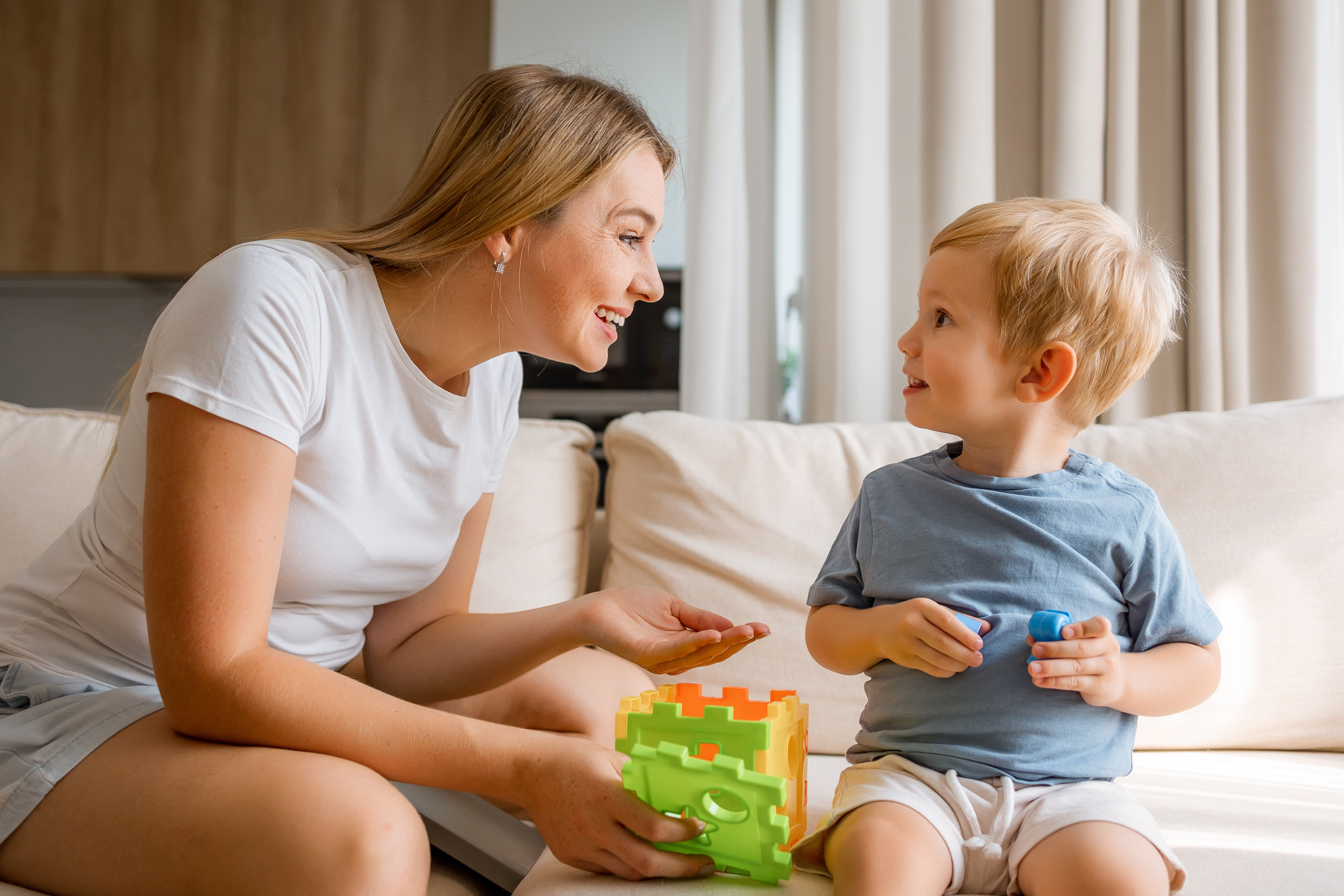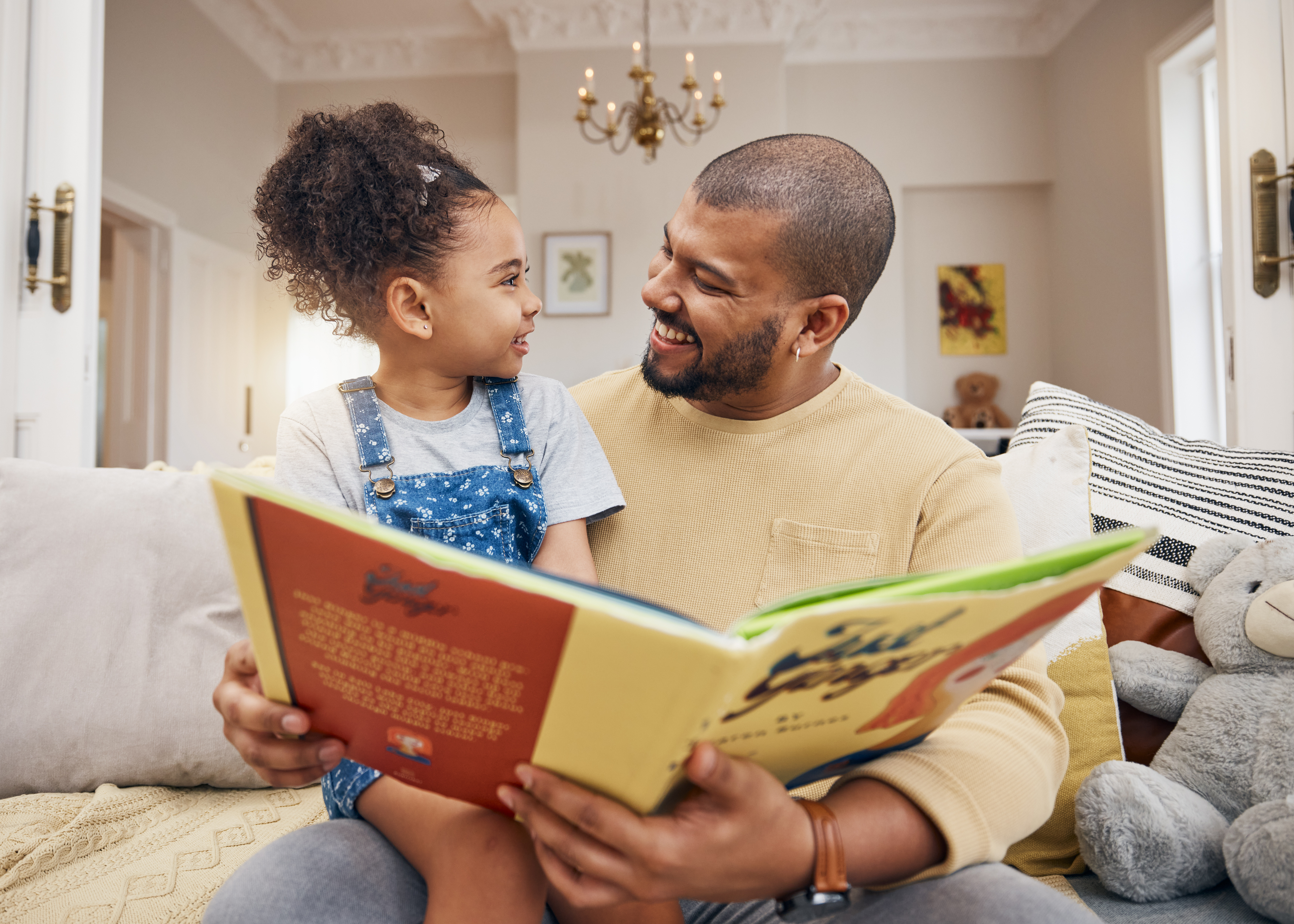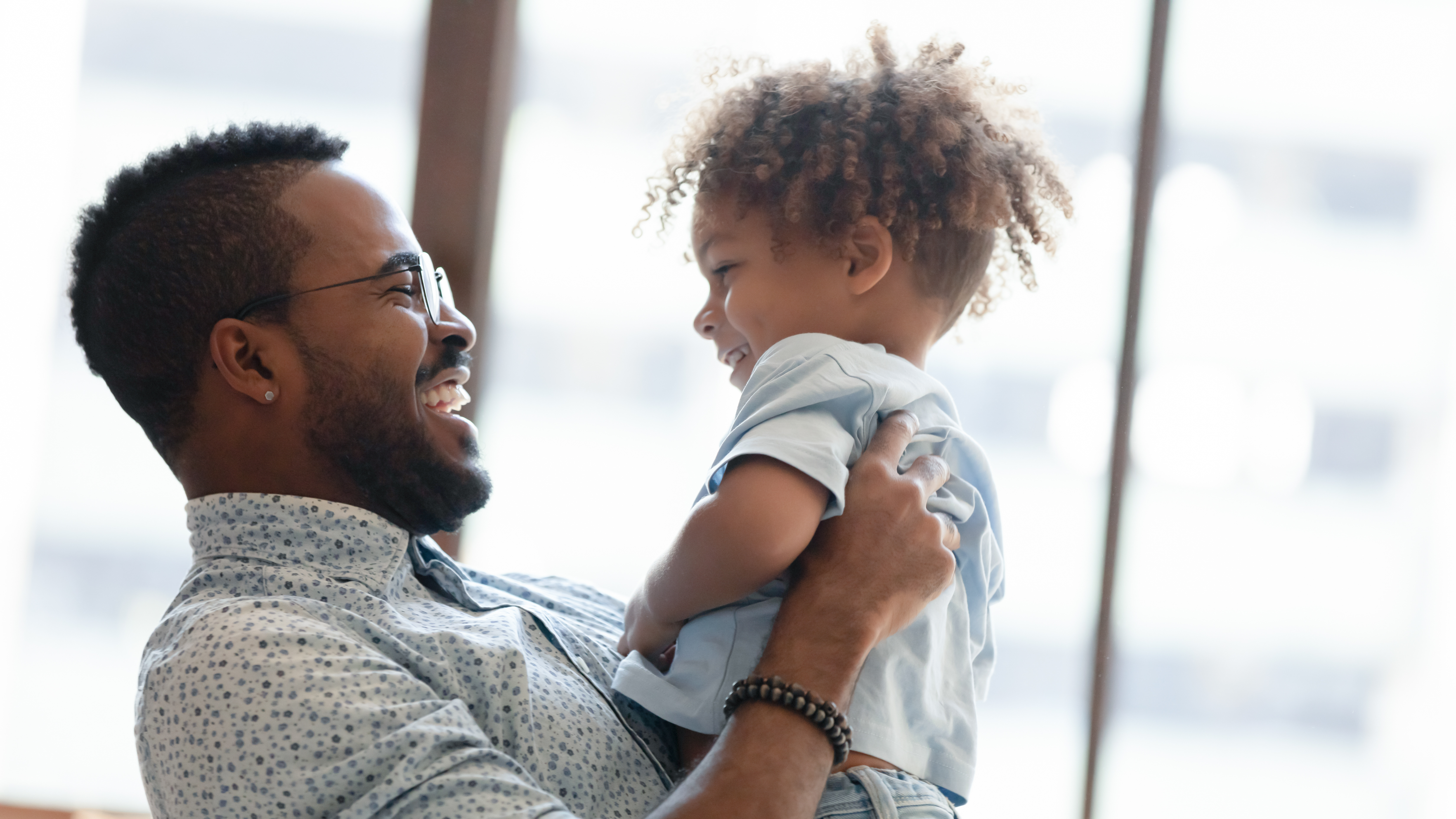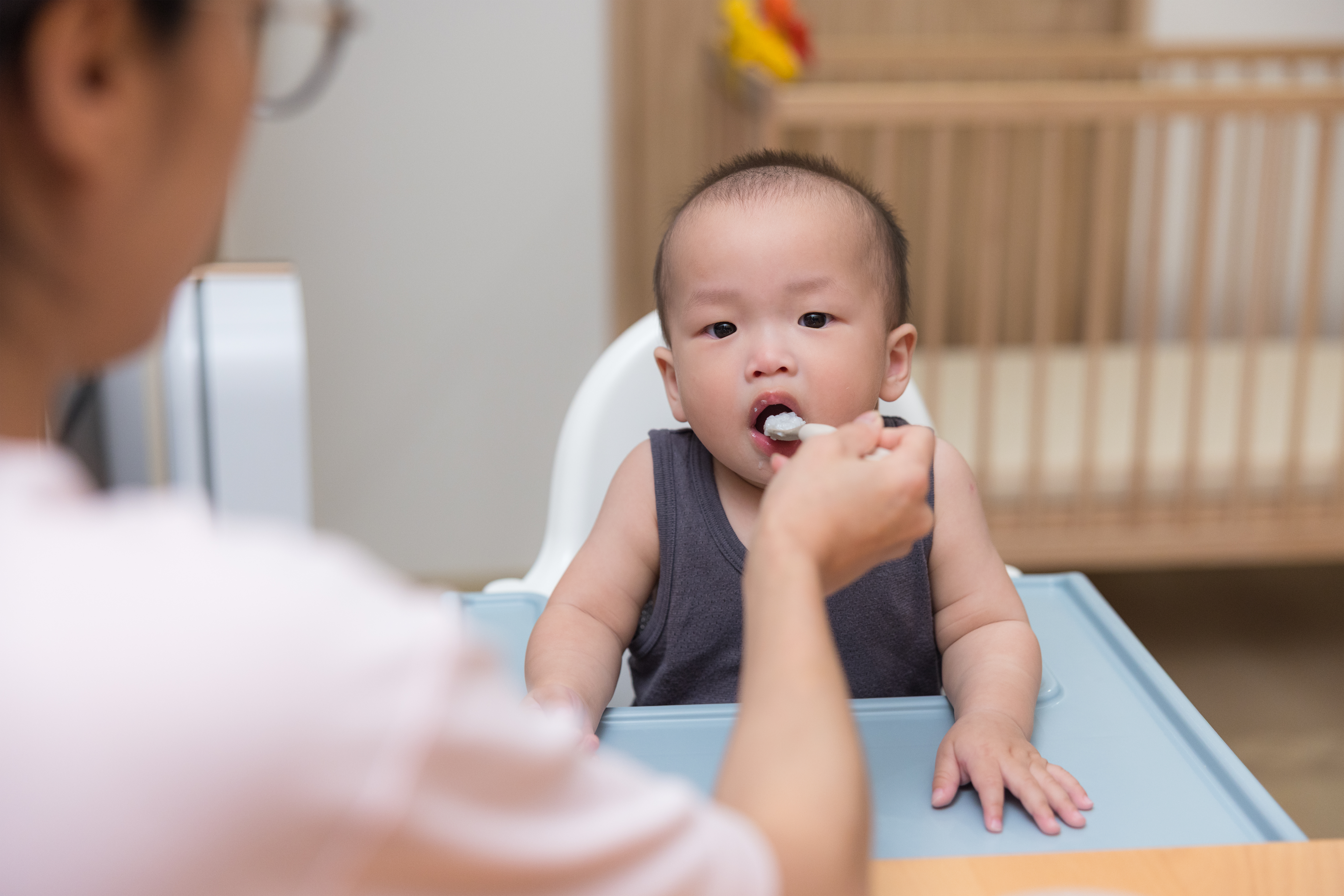Six Things Children Enjoy Most in Interactions

Do you ever wonder what your child enjoys most when you interact?
The Hanen approach is based on a key idea: helping you to become more responsive in interactions with your child.
Research consistently shows that being responsive provides children with the best opportunities to learn communication and language skills.1
So, what exactly does it mean to be “responsive”? There are many things that go into being responsive to children.
Let’s take a closer look at a recent study that explored what is included in being responsive.2
Understanding Responsiveness
Researchers reviewed 463 existing studies and identified how responsiveness was described most often.2 Here are six of the most important ways parents were considered to be responsive.
Being responsive means that, when your child communicates, you…
1. Respond directly to what your child has communicated

For example: Here we see Mila and her mom playing with toy rabbits.
Mila communicates by smiling and saying “buh” (for Bunny).
Mila’s mom gives a response that relates directly to what Mila has communicated, and says, “Hi, bunny! It’s nice to see you!”
2. Are Encouraging

For example: Here we see Eamon and his mom playing with building toys.
Eamon communicates by saying, “Mama look” (showing her that he has put two blocks together).
When his mom responds, “Oh, you’ve put two blocks together!,” she leans in closely with a warm, enthusiastic look on her face. This shows Eamon she is interested in what he has communicated.
3. Follow your child's lead

For example: Here we see Michaela and her dad reading a book.
Michaela prefers to flip back and forth through the book and look for her favourite character, Clifford, on each page. She communicates by pointing to the character each time and saying, “Hi!”
Michaela’s dad follows her lead and reads the book the way she wants. When he responds to Michaela saying “Hi!” to Clifford, he says, “Oh, hi Clifford! Now you’re hiding behind the house” or “Oh, hi Clifford! You’re eating a big bone.”
4. Pay close attention to your child &
5. Respond immediately

For example: Here we see Mateo and his dad playing a fun “toss” game.
Mateo communicates by looking at his dad and saying, “Uh!” (meaning “Toss me up in the air!”)
Mateo’s dad pays close attention to what he communicates. As soon as Mateo communicates, his dad responds by saying, “You want to go up!” and tosses Mateo up in the air again immediately.
6. Use words that relate specifically to your child’s message

For example: Here we see Andrew and his mom during snack time.
Andrew communicates by looking at his mom, opening his mouth, and reaching for the spoon.
Andrew’s mom uses words that relate specifically to his message by saying, “Yum! You want to eat more carrots!”
(adapted from Campi et al., 2025)
Being Responsive Enhances Interactions with Your Child
What happens when you use these six key ideas together?
Being responsive with your child shows them that you are interested in what they are communicating and you are encouraging them to communicate again. And, by emphasizing the important words in your responses, it makes it easier for your child to understand what you are saying.
Parents’ responsiveness has a powerful effect on children, motivating them to keep enjoyable interactions going and to use the communication skills they have more often.
But with many different ideas to balance at once, what is the most important part of being responsive with your child?
The answer is… waiting!
The Hanen strategy Observe, Wait and Listen™ (OWL™) sets you up to be responsive to your child every time they communicate because it encourages them to start the interaction – making it easy for you to be responsive.1

Observe
By observing what your child is interested in, you will be ready to respond by talking about what interests them.
Wait
Pause (without talking) to give your child time to communicate. Waiting makes it more likely that they will start the interaction.
Listen
Listen closely to what your child is saying or trying to say. When your response relates specifically to what your child is interested in or has communicated, your child will be more likely to keep the interaction going.
Using the OWL™ strategy gives your child time to think about what they want to tell you and the chance to share their interests. It also enables you to be responsive because you are paying close attention and are really focused on responding to everything they are communicating.
This not only builds the interaction between the two of you, but it also exposes your child to language that they can learn from!
Similar articles by tag:
Language Development | OWL | Follow the Child's Lead | Responsive Interactions | Responsivity
